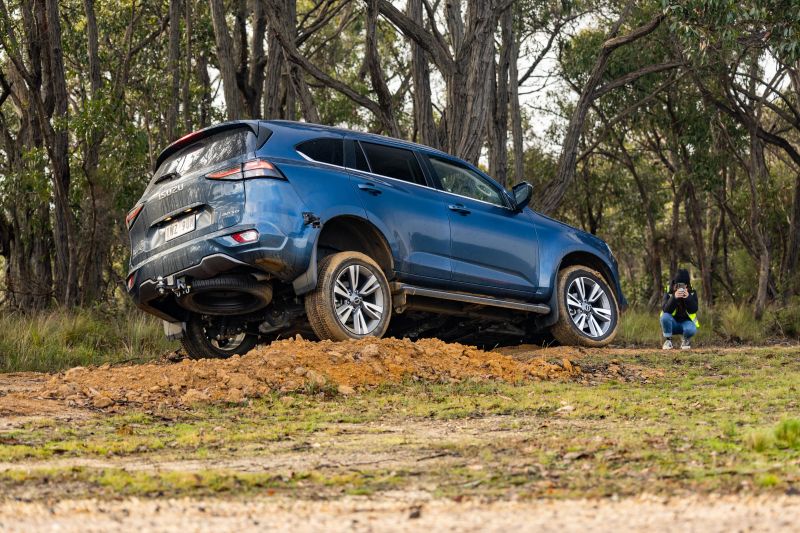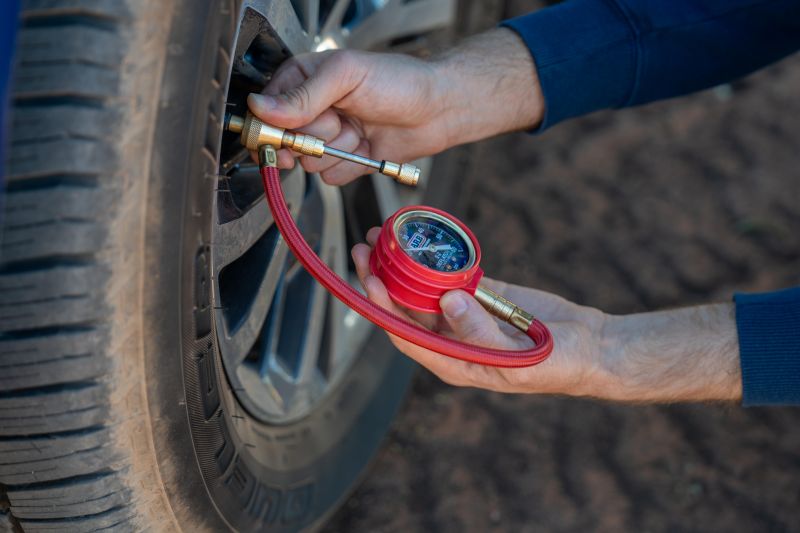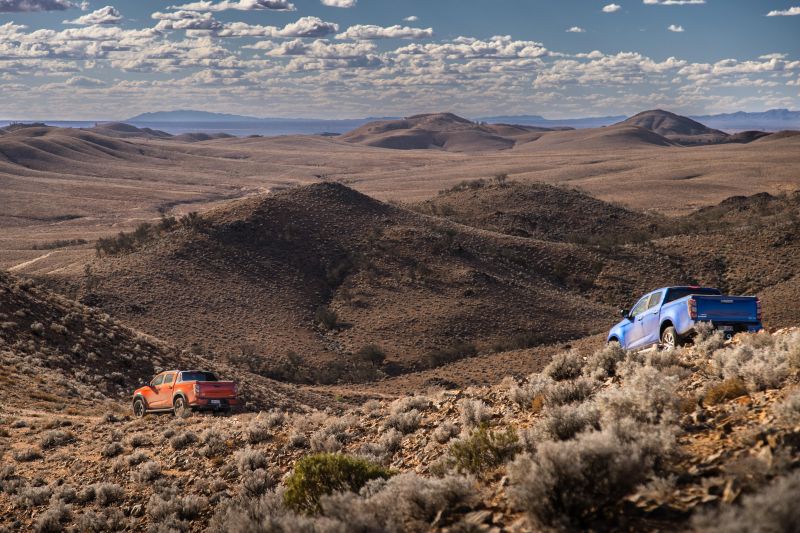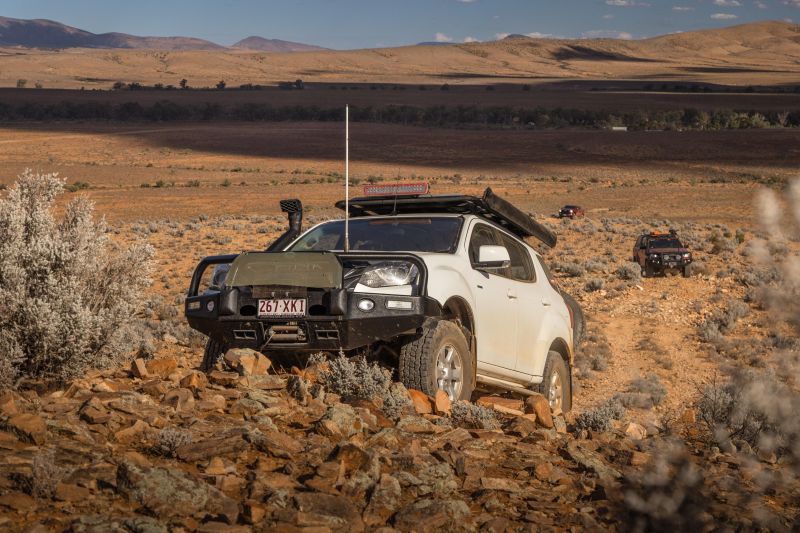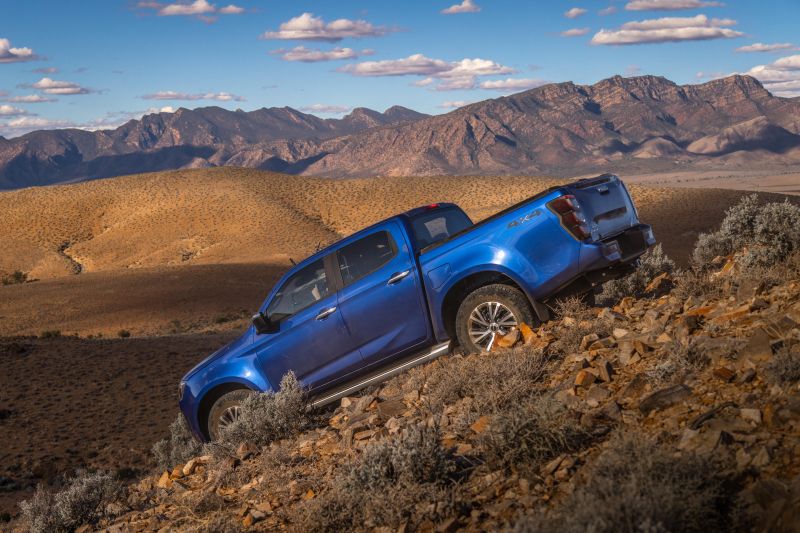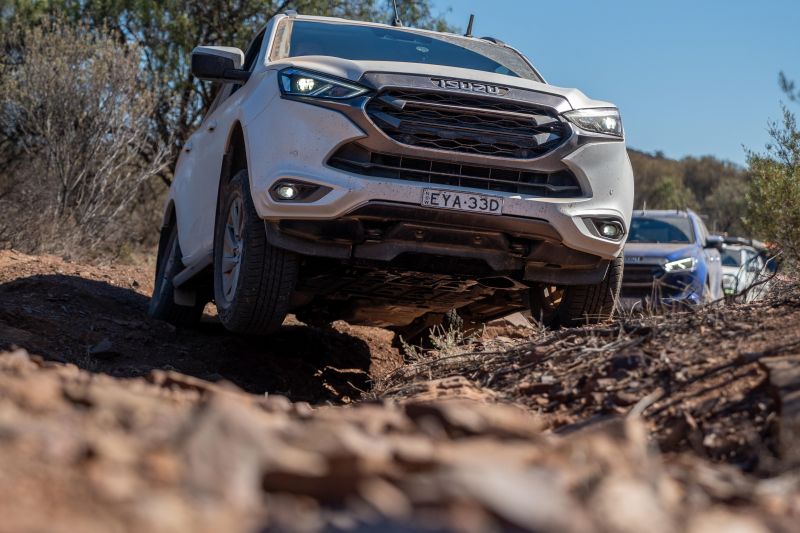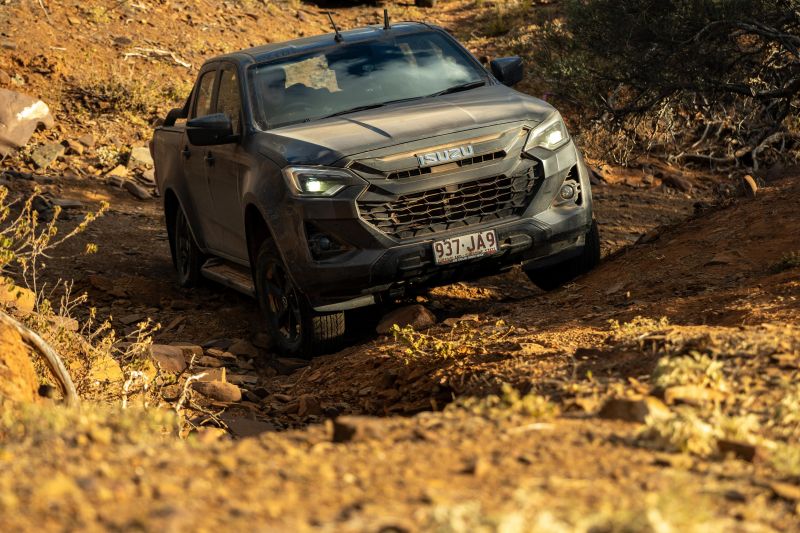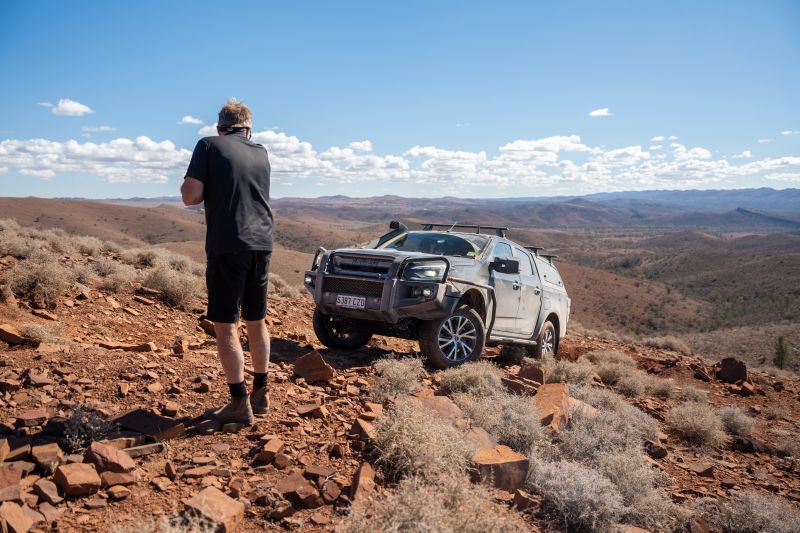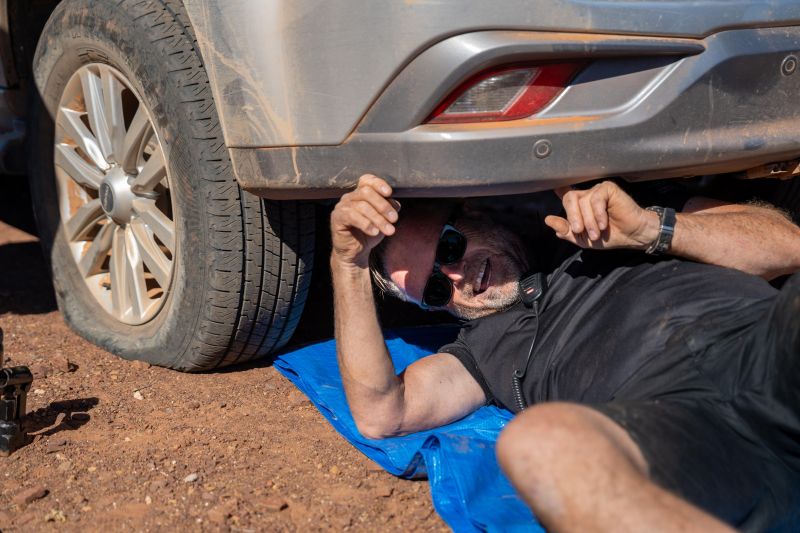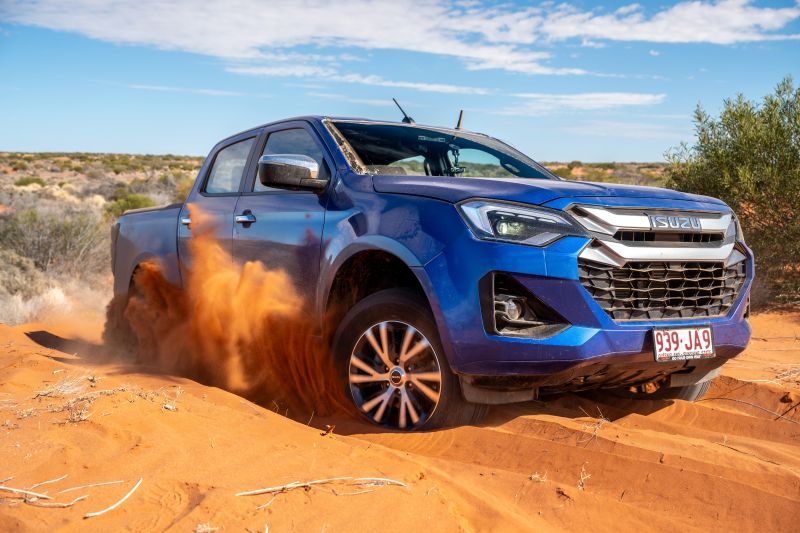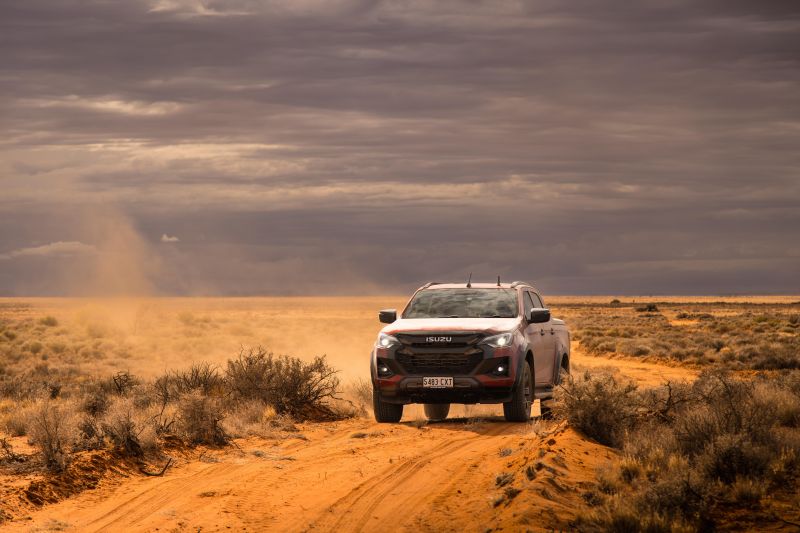Off-roading isn’t just a way to spend a day, it’s a lifestyle – and it can seem like everyone who partakes has years of experience.
It’s easy to forget all four-wheel drive enthusiasts started from scratch, and there are plenty of eager beginners who are keen to hit the tracks for the first time.
I was an eager beginner when I headed to the Flinders Ranges in South Australia to undertake a crash course in off-roading as part of the Isuzu I-Venture club.
The learning curve was steep, but I came away from the week with plenty of lessons.
Here are some of my biggest takeaways as a beginner, so you can prepare for your first adventure.
Preparation is key
Failing to plan is planning to fail.
It’s a saying that applies to many aspects of life, and that includes taking a trip off the blacktop.
Preparation means a few different things when it comes to off-roading.
First things first, you need to understand the capabilities of your vehicle as a beginner heading into the great unknown.
While old-school four-wheel drives were pretty rudimentary, even basic modern off-roaders are loaded with clever technology and it pays to understand how to use those features to your advantage.
In South Australia we had the opportunity to test the range of features on the D-Max and MU-X, which includes selectable dual-range 4WD, a rear differential lock, Rough Terrain Mode, and hill descent control (HDC).
Each came in handy at different points of the journey, but I wouldn’t have known how to utilise them without prior research.
The rear differential lock ensures the back wheels rotate at the same speed, which was useful in sticky situations with one wheel airborne.
Selecting the appropriate four-wheel drive setting is also pivotal. Some off-roaders can be operated in a 4A mode on sealed surfaces, but the D-Max and MU-X need to be driven in 2H (or rear-wheel drive) on the road, before switching to 4H (high-range 4WD) on loose surfaces.
4L (low-range 4WD) is for tougher conditions again. It multiplies the engine’s torque, allowing you to climb steeper terrain and maintain momentum where you otherwise wouldn’t be able in 4H. It can also be used to control the car’s momentum down steep hills.
The importance of tyre pressures can’t be underestimated.
Tarmac pressures are generally too high for off-roading, and make the tyre susceptible to punctures.
By dropping our pressures as low as 20 PSI for our sand dune session, we widened the contact patch of our rubber to maximise grip. If you are going to lower your tyre pressures, make sure you have the tools to then re-inflate them when you’re back on the blacktop.
Pick a line
Once you’re out in the thick of it, judgement becomes a crucial skill.
Just about anything can trip you up and put a halt to proceedings, from sharp sticks and stones, to steep gradients and unseen surface changes.
As such, off-roading requires concentration and active decision-making when it comes to picking the route ahead.
Marked trails make this process easier, but even then 4WD tracks are often deeply rutted or eroded by the elements. The aim is generally to avoid dangerous protrusions while staying out of ruts and holes.
Gradient changes need to be negotiated in a way that doesn’t expose the nose or tail of the car to the ground.
It’s all about thinking ahead, and taking the fewest risks possible.
Slow and steady
Before the trip I thought off-roading was all crash and bash, with little finesse or caution.
That couldn’t be further from the truth.
A significant percentage of the expedition was spent at 10km/h or less, trying to navigate hazards without damaging the cars or risking our health. It was tip-toeing around jagged rocks, slowly tipping into steep ditches, and crawling up steep inclines, rather than bullying the landscape Mad Max-style.
While four-wheel drives are built tough, the worst thing you can do is cop a flat tyre in the middle of nowhere as a result of negligent driving.
Opting for slow, steady progress gives you time to assess hazards as a driver, which in turn gives you more time to avoid them. At worst, there’s more time to enjoy the scenery.
By taking this approach we managed to dodge tyre-popping rocks, save the paintwork from vicious prickles, and avoid bottoming out during deep gully crossings.
It also helps keep you in control of the car when things get steep going downhill. Thankfully, the hill descent control standard in most modern four-wheel drives is on hand to make that process easier as well.
HDC is designed to keep the car in check on steep descents, using traction control and ABS sensors to control its speed downhill. It gradually pulses the brake on each individual wheel to limit descent speed, which let me ease the car down scary slopes without turning into a slalom skier.
At the end of the day, taking it easy also extends the longevity of a four-wheel drive by reducing the load on key components such as suspension and brakes.
That means more time enjoying the great outdoors, and less visits to your mechanic.
Time your turns
It goes without saying that off-road driving is different to your standard commute.
There were plenty of driving habits I needed to adjust during my stint in the bush, and perhaps the most challenging was related to positioning the car when cornering.
As a regular commuter you get used to cornering on smooth surfaces at speeds between 20km/h and 100km/h, which requires a certain set of inputs.
That completely changes when you’re traversing hilly, rocky terrain at walking speeds.
During the early stages of the trip I was sometimes caught turning the wheel too early due to force of habit, which resulted in brushes with the local flora.
Over time I learnt to delay my inputs, pushing right into corners before turning, which kept the entirety of my D-Max within the marked track.
Rather than aiming to clip apexes, it’s best to keep your car centred when the route is clearly marked.
Take a friend
A decked out 4WD and driver training can only get you so far, especially in rugged and unpredictable environments like the Flinders Ranges.
Even for the most experienced adventurer, things can go wrong and often it’s out of your control. Having a trusted ally by your side can make a massive difference for several reasons.
Firstly, they can provide an extra set of eyes to spot obstacles on the path ahead. Our guide, I-Venture Club lead trainer David Wilson, spent most of his time standing in the sun with a two-way radio in hand, talking us through the challenges to come.
He had the best view of any potholes, deep ruts, and nasty rocks.
Because drivers have an inherently limited range of vision, it was often the difference between cars being stranded and making it back to camp safely.
That’s not to say the week was always smooth sailing.
But when the proverbial hits the fan, it’s always nice to have a friend on hand.
As pictured, one member of the Isuzu convoy sustained a puncture during our journey and the repair was a group effort. Many hands make light work, and the setback would have been amplified if travelling alone.
Passengers are also able to provide other services such as navigation assistance and, most importantly, good company.
Occasionally ‘send it’
Slow and steady is the way to go in off-road situations most of the time…
It defies the image people have of over-confident hooligans tearing through the bush, with their mates yelling ‘send it!’ from the sidelines.
But sometimes, slow and steady wins the race. The natural environment is also preserved for future use, as reckless driving can harm the local ecosystem by churning up surfaces and damaging vegetation.
But – and it is a big but – some circumstances do call for speed, vigour, and wheel spin. Namely driving on loose surfaces, such as sand dunes.
We were confronted with this at Nilpena Ediacara National Park, where red sand took over from barren rock fields.
Here constant momentum is key, which means more gas pedal and less hesitation. In other words, the fun stuff.
Carrying extra speed facilitated steady progress across the dunes despite the lack of traction on offer, although even the most enthusiastic drivers came unstuck at times.
A couple of the customers, particularly those steering manual vehicles, were halted by the sand and were forced to retrace their steps at David’s request.
Nevertheless, there’s a time for everything, including attacking soft hills at full noise.
MORE: Everything Isuzu D-Max
MORE: Everything Isuzu MU-X


